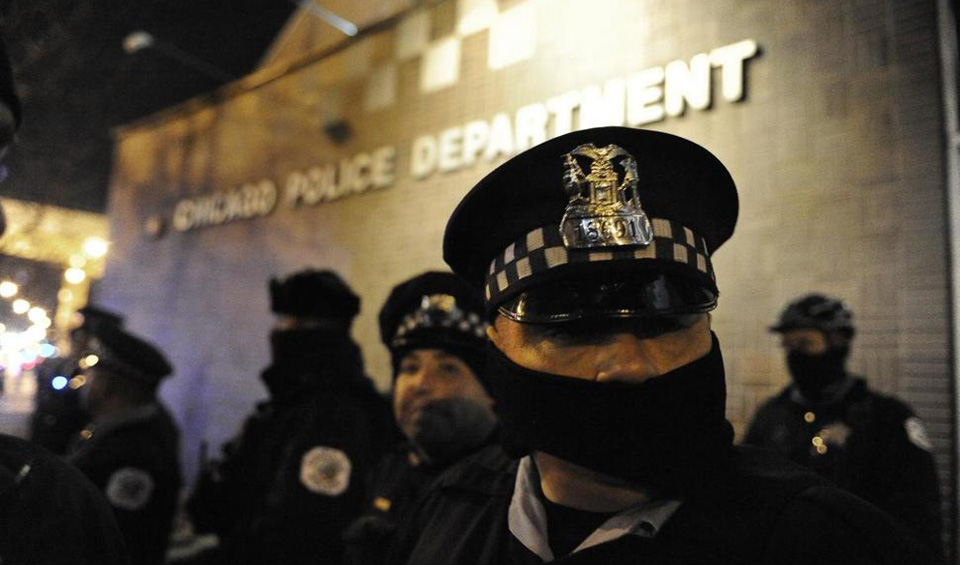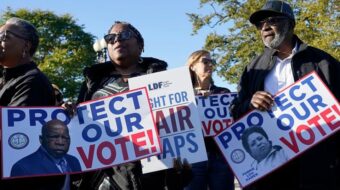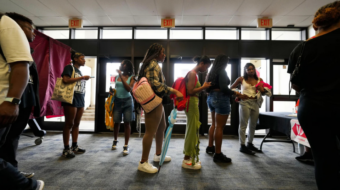
CHICAGO — One Chicago day, in an unspecified neighborhood, a neighbor called to report that a group of teenagers were playing basketball on someone’s private property. The property belonged to a Chicago police officer, who at the time was on duty, and left his district to respond to the call. He found the teenage boys down the street on their bikes, where he confronted them. Records indicate that the officer pulled out his gun and pointed it at the children, threatening to put their heads through a wall and to blow up their homes. The officer then forced the teenagers to kneel and lie face-down, handcuffed together. This scene continued for an unspecified amount of time, all while the cop yelled profanities and used other intimidation tactics against the young boys.
Once released, several of the boys ran home to their parents, showing them the visible injuries on their knees and wrists. Their parents reported the incident to Independent Police Review Authority, who conducted an investigation of the incident. The officer ultimately only received a five-day suspension. The officer was never interviewed and his reasons for not contesting the allegations are not documented in the file.
It is stories such as this one that recently came to light in a recent report released by the United States Department of Justice Civil Rights Division and US Attorney’s Northern District of Illinois. Public outcry has since intensified against the Chicago Police Department, as there have been numerous reports of Chicago police subjecting children to force for non-criminal conduct and minor violations. The assessment, titled “Investigation of the Chicago Police Department,” reveals a number of human rights violations and acts of misconduct on the part of the Chicago Police department, many of which have targeted Black and Latino populations.
A pattern of violence against youth of color
This news comes as no surprise to many of the Chicago-based activists that have been working diligently to combat the systemic violence that has plagued the city. For many people, the battle for oversight and accountability within CPD started long before the release of the Laquan McDonald tape. In November of 2015, Mayor Rahm Emanuel faced public pressure to release the dash-cam squad car footage which exposed Chicago Police officer Jason Van Dyke shooting the 17-year-old repeatedly after he had already fallen to the ground. “16 shots”, a reference to the wounds that McDonald suffered, became a mantra for critics of CPD and their pattern of unlawful and excessive force within the department. While McDonald’s killing itself took place in October of 2014, it wasn’t until November of 2015 that the video was released to the public. Nationwide protest and outrage followed.
It became immediately clear, after the release of the video footage, that not only had the initial police testimony starkly contrasted the actual events, but that there were several officials who played major roles in brushing the shooting under the rug. The death of Laquan McDonald launched a series of responses, including: the firing of Chicago police superintendent, Garry McCarthy, and the eventual loss of reelection for Cook County State’s Attorney, Anita Alvarez. It opened the door for the Department of Justice to launch its investigation of the matter, as residents demanded that the culprits for both his death, and the alleged cover-up, be held accountable.
Since the release of the reports a number of issues have been brought to light, including the unnecessary overuse of Tasers on individuals that posed no threat. “Some CPD officers resort to Tasers as a tool of convenience, with insufficient concern or cognizance that it is a weapon with inherent risks that inflicts significant pain” (p. 33 DOJ).
There were reported cases of Chicago Police taking gang members into parts of the city controlled by their rivals in an effort to coerce information and confessions. In other instances, the report detailed the use of excessive force against juveniles, one in particular highlighting an incident where officers Tasered a 16 year old girl who refused to relinquish her cell phone to her teachers while in school. The school called the cops, claiming that because the girl was in violation of school rules she was “trespassing.”
In another case it was found that an officer forcibly handcuffed a 12-year-old Latino boy who was outside riding a bike under his father’s supervision. The plainclothes officer, was responding to a report of “two male Hispanics running from” the area, detained the boy. The boy was forcibly handcuffed, pushed against a fence, without parental or adult supervision of any kind. According to the boy, the officer continually accused him of being “old enough to bang,” meaning old enough to engage in gang violence. The boy’s father approached the officer in an effort to de-escalate the situation, and eventually was able to get the boy released from custody. The report stated that the officer’s “only apparent basis for this detention was the boy’s race, which is Constitutionally unreasonable.”
Despite the Chicago Police Department’s claims that re-establishing trust within the community is a priority, these incidents can be found throughout the DOJ report. Lori Lightfoot, president of the Chicago Police Board and a member of Mayor Rahm Emanuel’s Police Accountability Task Force, said in a television interview that he was anxious for the report not to misrepresent the entire police department. “I asked them [examiners] to please ensure that we’re not going to see some wide brush being painted across the department, like the last report that came out, saying we were all systemically racist.” Lightfoot said that his while the police expected to get “beat up again” over the publicity of the findings in the reports, but that hoped to also be able to take advantage of the “positive aspects” such as access to better training.
The grassroots response
Several activist collectives have come out with public statements, as organizers around the city have spent much time bringing awareness and pushing for police accountability. In particular, The Chicago Alliance Against Racism and Political Repression, has been working with several Chicago-based organizations, (BYP100, Let Us Breathe Collective, We Charge Genocide, etc.) to push for a Civilian Police Accountability Council, or CPAC, which would replace Mayor Emanuel’s appointed “task force.”
CAARPR has long been part of a larger collective of organizations that have frequently called for transparency and accountability on the part of the police. They have been working for several years towards build a formal movement within the communities most directly impacted by police violence. The CPAC ordinance would allow community members to elect representatives from all of the police districts, and have a critical role in the way which how their own neighborhoods are “policed.” A CPAC would also include an independent inspection committee to review any police misconduct. The original push for the ordinance garnered support from many corners of the city, from both residents and politicians alike: over 35,000 people signed petitions and 8 aldermen sponsored legislation to establish the CPAC. However, it remains just a proposal at this moment in time.
Frank Chapman, a leading organizer of CAARPR’s parent organization, said in a statement on Facebook that the DOJ report is simply one facet in the process of accountability that the city must uphold. “What we have in this DOJ Report on Chicago is evidence of Chicago police officers routinely engaging in murder, brutality and torture and blatantly violating our supposedly federally protected Constitutional rights,” said Chapman, “and yet not one recommendation comes out of this report calling for the prosecution of police who have committed these crimes.”
A possible consent decree
In light of the recent report, Rahm Emanuel signed an “agreement in principle” that would open up doors for the city of Chicago to negotiate a consent decree with the Justice Department. A consent decree is an agreement that lays out steps to resolve a dispute between two parties, without assigning guilt or blame. Based on the report’s findings and overall demand for reform of CPD conduct across the board, the consent decree would be enforced by federal courts as a means of administering much needed steps in the right direction.
Other cities such as Baltimore have utilized consent decrees as a means of pushing for reform on police violence. Earlier this month, Mayor Catherine Pugh announced the official release of the city’s 227-page consent decree, which details plans for a massive overhaul in the police department. This comes nearly two years after the 2015 death of Gray, who died in police custody while being transported in a van during an arrest. Many of the details surrounding Gray’s death remain unknown even after the trials of several of the officers who were present at the time Gray sustained his injuries. Civil rights groups around the country have largely placed the blame of the incompetence and misconduct of the Baltimore Police.
Still, there is much unfinished work left for the Chicago Police Department, say community groups, who say they want to push beyond the proper training and guidance to understand the meaning of an “adequate use of force.” Several of the reforms that have come out of consent decrees in other cities have focused primarily on restoring community trust in law enforcement; and increasing training for police officers. These band-aid solutions, however well-intended, often have the effect of increasing funding for militarized technology and equipment that is utilized yet again against the most vulnerable residents. Instead of simply focusing on trust or training, Chicago’s community advocates continue to push for actual public accountability for the CPD, and a move toward police-free communities.










